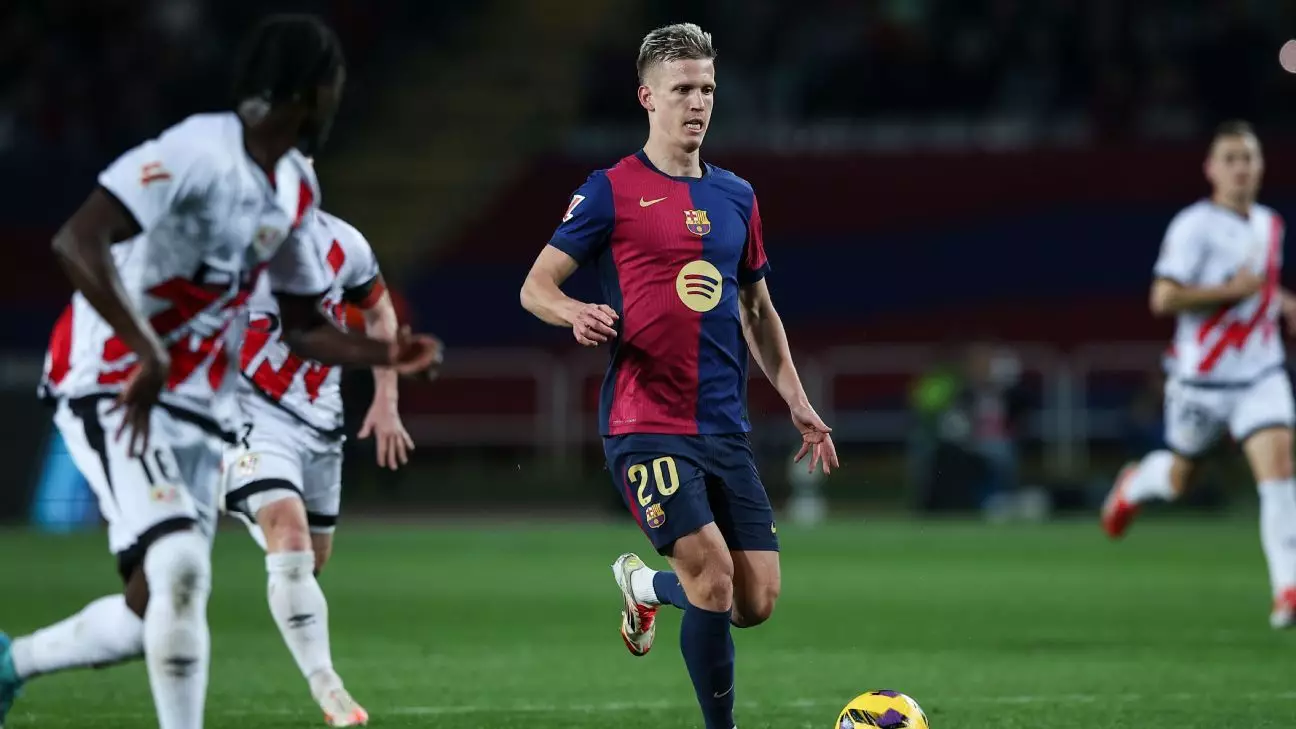In recent months, FC Barcelona has made headlines not just for its on-field performances but also for its remarkably evolving financial status. With LaLiga’s confirmation that Barcelona’s annual spending cap has risen to over €463 million (approximately $483.7 million), this marks a significant recovery from the staggering lows faced just a year ago. A mere 12 months back, the club’s spending limit was drastically reduced to €204 million, sparking serious concerns about its future operational viability. This increase represents nearly €40 million in new potential spending, offering a glimmer of hope for club management and supporters alike.
The resurgence in Barcelona’s financial health is attributed to several strategic maneuvers, particularly the recent sale of 475 premium VIP seats at the Spotify Camp Nou. This lucrative deal, reportedly worth around €100 million, was made with two different investors from the Middle East. Notably, these seats are leased for a maximum of 30 years, potentially providing long-term financial cushioning. While this substantial influx of capital improves the club’s immediate economic outlook, it also highlights Barcelona’s reliance on innovative financing methods to recover from its fiscal mismanagement in previous years.
Despite this positive trend, Barcelona’s financial situation still lags behind their primary rival, Real Madrid, whose cap stands at an impressive €755 million. Following Barcelona in the financial hierarchy are Atlético Madrid (€314 million), Real Sociedad (€160 million), and Villarreal (€135 million). The stark contrast underscores the challenges that Barcelona still faces as it navigates an increasingly competitive LaLiga landscape. Sevilla’s distressing financial conditions, leading to a drastic reduction of their cap to only €684,000, present a cautionary tale for the Catalan giants, serving as a reminder of the risky precipice of financial instability that can ensue from poor management.
The Underlying Mechanics of Financial Limits
The paradigm that determines these financial caps revolves around a club’s revenue, its non-sporting expenditures, and an obligation to service debt. Essentially, the limit dictates how much each club can allocate for salaries, bonuses, and amortization payments for player transfers. This metric does not denote what a club is currently spending but outlines a ceiling that should not be exceeded without repercussions. Club financial irregularities, like those seen with Sevilla, can lead to stringent measures that greatly restrict their ability to operate in the transfer market.
In contrast, Barcelona’s recent financial ascension means they are compliant with LaLiga’s regulations, allowing them to spend 100% of whatever they save or earn, a framework known as the “1:1 rule.” Yet, even with this newfound flexibility, barriers to registration for players like Dani Olmo and Pau Víctor remain, emphasizing that challenges still loom over the club despite its recovering financial profile.
Barcelona’s improvement, while promising, is not free of complications. LaLiga and the Spanish Football Federation (RFEF) raised concerns that Barcelona had failed to meet a deadline to validate its compliance with the spending cap, rendering key player registrations impossible for the ongoing season. This regulatory hiccup serves as a cautionary note that pitfalls remain amongst the financial recovery narrative.
Despite winning an interim injunction against LaLiga and RFEF’s restrictive measures from Spain’s sports ministry—the Consejo Superior de Deportes (CSD)—the club finds itself embroiled in bureaucracy that could prolong the uncertainty regarding player eligibility for selection. While the situation surrounding Olmo and Víctor currently appears to be resolved tangentially, the long-term implications of these regulatory issues still loom large.
While Barcelona’s financial recovery showcases a positive turnaround, it is crucial for stakeholders—fans, management, and investors alike—not to lose sight of the underlying risks. The reliance on extraordinary financial strategies and navigating regulatory pitfalls illustrates that the future remains unpredictable. For FC Barcelona, this period could be seen as a new dawn, but vigilance and prudent financial management will be paramount to ensure that they do not stumble back into the depths of European football’s financial challenges.

Leave a Reply